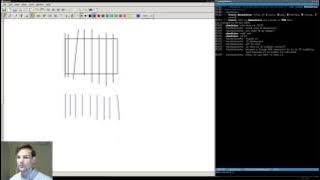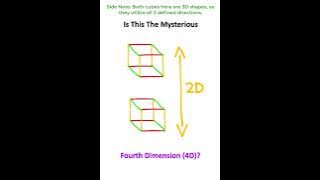Dimension | Multi-dimensional geometry | Four-dimensional geometry
Four-dimensional space
A four-dimensional space (4D) is a mathematical extension of the concept of three-dimensional or 3D space. Three-dimensional space is the simplest possible abstraction of the observation that one only needs three numbers, called dimensions, to describe the sizes or locations of objects in the everyday world. For example, the volume of a rectangular box is found by measuring and multiplying its length, width, and height (often labeled x, y, and z). The idea of adding a fourth dimension began with Jean le Rond d'Alembert's "Dimensions" being published in 1754, was followed by Joseph-Louis Lagrange in the mid-1700s, and culminated in a precise formalization of the concept in 1854 by Bernhard Riemann. In 1880, Charles Howard Hinton popularized these insights in an essay titled "What is the Fourth Dimension?", which explained the concept of a "four-dimensional cube" with a step-by-step generalization of the properties of lines, squares, and cubes. The simplest form of Hinton's method is to draw two ordinary 3D cubes in 2D space, one encompassing the other, separated by an "unseen" distance, and then draw lines between their equivalent vertices. This can be seen in the accompanying animation whenever it shows a smaller inner cube inside a larger outer cube. The eight lines connecting the vertices of the two cubes in this case represent a single direction in the "unseen" fourth dimension. Higher-dimensional spaces (i.e., greater than three) have since become one of the foundations for formally expressing modern mathematics and physics. Large parts of these topics could not exist in their current forms without the use of such spaces. Einstein's concept of spacetime uses such a 4D space, though it has a Minkowski structure that is slightly more complicated than Euclidean 4D space. Single locations in 4D space can be given as vectors or n-tuples, i.e., as ordered lists of numbers such as (x, y, z, w). It is only when such locations are linked together into more complicated shapes that the full richness and geometric complexity of higher-dimensional spaces emerge. A hint to that complexity can be seen in the accompanying 2D animation of one of the simplest possible 4D objects, the tesseract (equivalent to the 3D cube; see also hypercube). (Wikipedia).



















